After investing thousands of dollars and months of your time on positioning, messaging, prospecting, and deal-making, you're finally turning those leads into sales. New prospects are lining up to drop into your marketing funnel and glide through the stages of awareness until they make the decision to buy.
Then, after the first transaction or contract, they glide right on out.
An underwhelming onboarding experience can send new clients running, which means their lifetime value is nowhere near what you need to recoup the customer acquisition cost. A smart—and automated—customer onboarding process can help reduce churn, and here, we'll offer some tips on how to create a system that works.
Why Does Customer Onboarding Matter?
The initial interactions a new customer has with your business set the tone for your entire relationship. And the likelihood of a customer sticking with you—and recommending you to others—increases with the level of prioritization you give to creating an excellent onboarding phase.
According to a recent study from Harvard Business Review, "an increased focus on onboarding offers significant or moderate positive impact over the life of the contract for revenue, client renewals, and client referrals."
Looking at it from the other side, the costs of not having a successful onboarding period are significant. Here are just some of the problems it can cause:
You miss out on valuable feedback that could be used to improve your product/processes.
Any trust you've built winning the customer goes out the window.
Your close rate for selling more products/services to existing customers flatlines.
Unhappy customers write negative reviews.
If you depend on monthly recurring revenue, your churn rate will go through the roof.
Creating an Effective and Scalable Onboarding Experience
We invited some customer experience pros to weigh in on the key elements of great customer onboarding. By applying a mindset shift toward customer-centric, data-driven onboarding and using a bit of automation, you can put these ideas into action.
Make your customer onboarding a cross-functional process
First thing's first: Who in your company handles onboarding new customers? Sales? Customer service? Someone in accounts receivable?
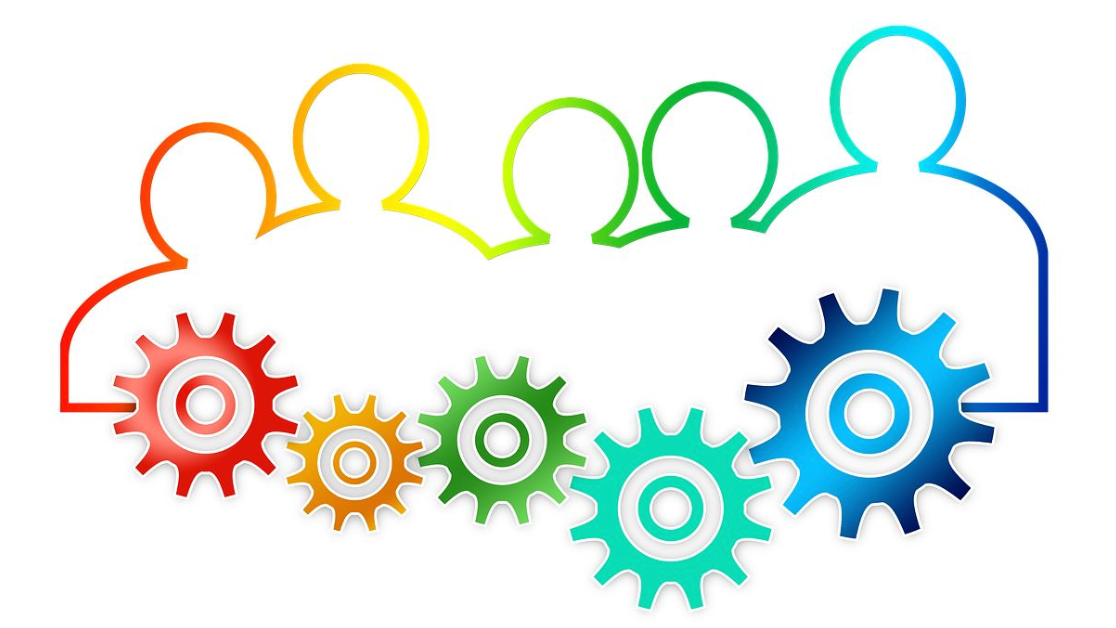
One of the biggest mistakes your company can make is having your sales team pass the baton to customer service once a new client is signed up. Treating onboarding as a responsibility for customer service alone not only will give your new client a disjointed and impersonal experience, but your company will miss the boat on communicating crucial information across departments.
Onboarding is a team sport. The level of involvement from different departmental roles depends somewhat on how fully developed your onboarding strategy is. If your in-product onboarding has high drop-off rates, the team responsible for testing new approaches might include a project manager, developer, designer, and UX writer. If most people seem to get the hang of the product but few sign in after their trial, your task force might include a data scientist, an email copywriter, and a customer researcher. That's why step one of new client engagements is always understanding where the biggest onboarding pain points are and who has which roles on the onboarding task force. - Alli Blum, SaaS onboarding consultant.
Of course, if you're running a small or solo business, your onboarding "team" may be the very software tools you use to run these aspects of your customer interactions. We'll help you discover some expert-recommended tools—and the automations that will turn them into onboarding machines—throughout this post.
Develop a healthy obsession with your customer
Changing your focus from product/sales-centric to customer-centric is a major mindset shift, but it's key to establishing a meaningful relationship driven by a desire to help your customers achieve their desired outcomes. Sue Duris, Co-Founder/Director of Marketing and Customer Experience at M4 Communications addresses this issue:
I see many companies believe the destination is conversion or purchase or acquisition and so at that point they believe their work is done. They still think by doing nothing, a customer will renew. Not true. Nurturing is a continuous thing from awareness through advocacy, through the entire customer journey/lifecycle.
Relationship-building through onboarding isn't just about creating warm fuzzies, according to Duris. It's smart business.
This is because you are developing the relationship through feedback, knowing the training to offer, the key features to promote, the content to provide to help them be successful. It's important to guide the user/customer to what to do. Doing so they will have those "aha" moments that they see you are helping them to be successful and they are being successful and they decide to adopt your product and stick with you.
It's worth mentioning that by listening to your customers and users, you're also learning about how to improve your product/service, not just your onboarding process. The feedback you get likely will leak into other areas.
Create a customer advocate persona
Chances are you already have a user or buyer persona—a data-backed fictional representation of the person most likely to convert from a lead to a sale. But have you discovered who among your customers are the most likely to develop into long-term relationships? These are your customer advocates.

Al Chen, Solutions Architect at Coda.io, says figuring out who your customer advocates are is fairly obvious.
They usually contact us with product feature requests and log bugs. We also discover a lot through Twitter, our community forums, and direct emails.
Paige Worthy, Client Services Director at B2B Content Strategy and Marketing agency SPRK-D, says that customer advocates are actively invested in the success of your business.
Your happiest customers are the ones who invite you to pull up a seat to the table and be part of their ongoing business decisions. You offer to help them and they enthusiastically chime in with thoughts they already had on further partnerships. There's open, two-way communication constantly. If you have to ask who your happiest customers are, you aren't paying attention.
But there's also another segment of your customers that you want to keep track of: the difficult ones. B2B SaaS Consultant Nichole Elizabeth DeMeré explains:
Sometimes our "difficult" customers (the ones filling out the most support tickets) are actually the ones who we want to save because they are really invested in our product and will eventually become the most successful with reaching their ideal outcomes with it.
In fact, paying attention to those clients can help you expand your horizons as a business. Copywriter Karine Bengualid sees difficult customers as diamonds in the rough:
They're just struggling with your product or service. This could lead to great insights on how to improve your offering in ways you never imagined. Sometimes the squeaky wheel is annoying, but sometimes they're letting you in on something you may never have found otherwise.
Once you've identified your smooth and squeaky wheels (i.e., successful and unhappy customers), it's time to talk with them. A "Jobs to Be Done" interview is a way to unearth the circumstances, emotions, and actions that led to your customer's decision to use and continue to use your product or service.
But here's the thing about customers talking about their needs and wants: They lie. Not always, and in most cases not intentionally, but depending on their personalities and a whole host of psychological factors, the way people voice their experiences can often be an unreliable source of information. That's why it's so important to test your hypotheses. That testing can be anything from Net Promoter Scores and surveys to A/B tests. More on that later.
Once you pull all this information into a cohesive persona ready to share across your company, it's time to take action on helping your customer succeed.
Help your customer win early on
The onboarding phase is an opportunity to provide mutual value to your customers and your business: They start achieving their goals, and you get valuable data so you can qualify them for future sales offers and create better products or services.
And the early wins need to happen within moments of signing up. According to Andrew Chen, general partner at Andreessen Horowitz, "the average app loses 77% of its DAUs within the first 3 days after the install. Within 30 days, it's lost 90% of DAUs. Within 90 days, it's over 95%. Stunning."
Knowing, with hard data, what user behavior increases the likelihood of success is key to a great onboarding experience. Alli Blum explains the importance of that data:
I look at quantitative behavioral data and qualitative research. In a best case scenario, I love to see what a data scientist can extract from user behavior about the patterns that are likely to lead high retention at 30, 60, or 90 days. Every single milestone needs to be useful for the client, not for you.
Observing customer behavior as they first start using the product can also offer great insights. And there are a variety of tools to give you access to a customer-eye view of the onboarding experience. If you're running a SaaS company, user experience tools like Appcues, UserIQ, and Wootric have built-in analytics that measure engagement, product usage, and satisfaction at assigned customer behavior events.
You can also ask first-time customers to interact with your product while recording their screens using a screen capture tool.
Finally, having one-to-one interviews with both happy and unhappy customers can reveal some overlooked qualitative data that quantitative tools and surveys might have missed. Or, if you don't have the resources for that, you can listen to customer service calls.
After listening to recordings of customer success calls and reviewing chat logs, my client, inventory management SaaS Forecastly, discovered that having a live walkthrough with a member of their CS team increased the likelihood of a user completing an essential step of the account setup.
Knowing that the live demo was a key element to customer success, the Forecastly team reworked their onboarding messaging to communicate the benefits of scheduling a live walkthrough as soon as the user signed up.
Keep communication as transparent as possible
Radio silence after an order is deadly. Your customer is at a vulnerable point immediately after the sale: Can they trust you?
Victor Bilandzic, Managing Consultant at digital marketing firm Motava elaborates:
A big issue with service-based industries is establishing realistic expectations for the life of the new relationship. What are the deliverables? What's the timeframe? What's the expected result? If the service provider and customer are not on the same page and seldom communicating, it'll cause a lot of issues. In addition, all employees and contractors on the account also have to have those same expectations.
And if you're not communicating with your customers, they'll be sure to communicate with the rest of the world instead—in places like social media and online reviews, which can impact your future signups. So do your customer relationships a favor and avoid bad communication from the outset.
One easy win is just automating your onboarding emails so people get them right away. Wes Bush, product-led consultant at Traffic Is Currency, explains:
One of the biggest missed opportunities I see is SaaS companies not sending out automated emails welcoming new customers as soon as they upgrade their free trial or freemium plan. Often times, these companies will manually reach out. The problem is that these new customers need to be reassured that they made the right choice immediately. Automated customer welcome emails are by far one of the best ways to accomplish this.
There's some data to back that up. In a recent customer-generated post featured on Intercom, online test prep service Magoosh documented what happened when it sent simple welcome messages to half of its new users and no welcome messages to the other half. Over the course of just two weeks, the students who received the welcome message were 17% more likely to convert to paid accounts than those who did not.
Automating those initial messages is easy. Here are some suggested Zaps—Zapier's term for automated workflows—to get you started:
Add new Keap Max Classic contacts to Benchmark Email
Once you've sent that first email, keep new customers in the loop with delivery status/project updates. If your company delivers physical goods or creative services, give your customer the tools to track the status of their order or project.
If you're in a B2B company, you can even invite your agency clients to your project tracking tools. Content marketing agency Grow and Convert invites their clients to their Trello boards so clients can see where blog posts are in the publication process. Benji Hyam, co-founder of Grow and Convert, explains:
When we started the agency, we built the agency that we would want to have as clients. We felt that in order to provide a great experience, we should be super transparent with everything so our clients always knew what was going on, and so that they could learn with us if they chose to. Trello serves as our content calendar so clients can see where our articles are at, at any point in time. They can also see all of the comments and feedback that we give to writers for every piece that we write. We built traffic and conversion dashboards that are accessible to the client at any time as well, so that clients can see live stats instead of only getting a report at the end of the month. The response has been very positive—clients feel like they're always in the know and I believe it helps build a trusting relationship between ourselves and the clients.
Even SaaS companies can shed light on their internal processes for new and potential customers. Video recording app Loom loves transparency so much they've created a public product roadmap to give early adopters a peek into their product development process and let them have a say about future features.
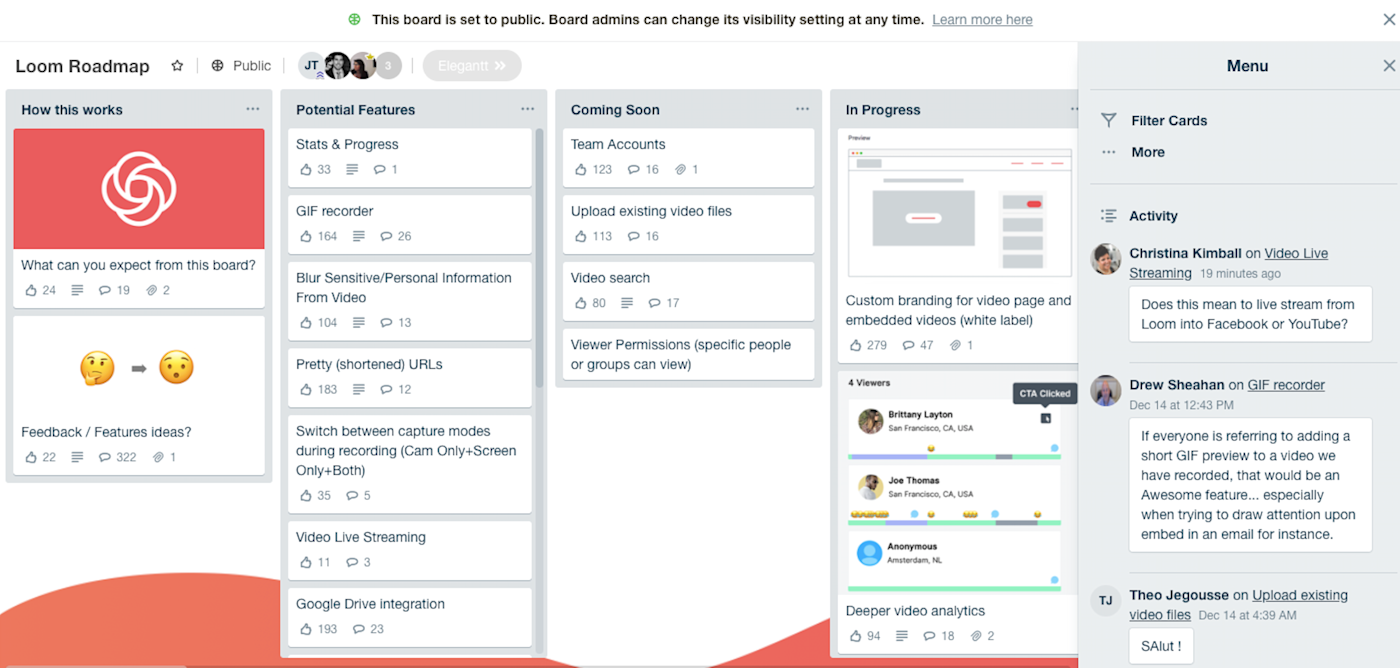
Always ask for feedback
The best thing you can do for your customers is listen and make them feel heard. Building feedback loops into your customer interactions, and personalizing your messaging to their needs will improve your ability to serve them.
According to Accenture, 81 percent of consumers want brands to understand them better and know when and when not to approach them.
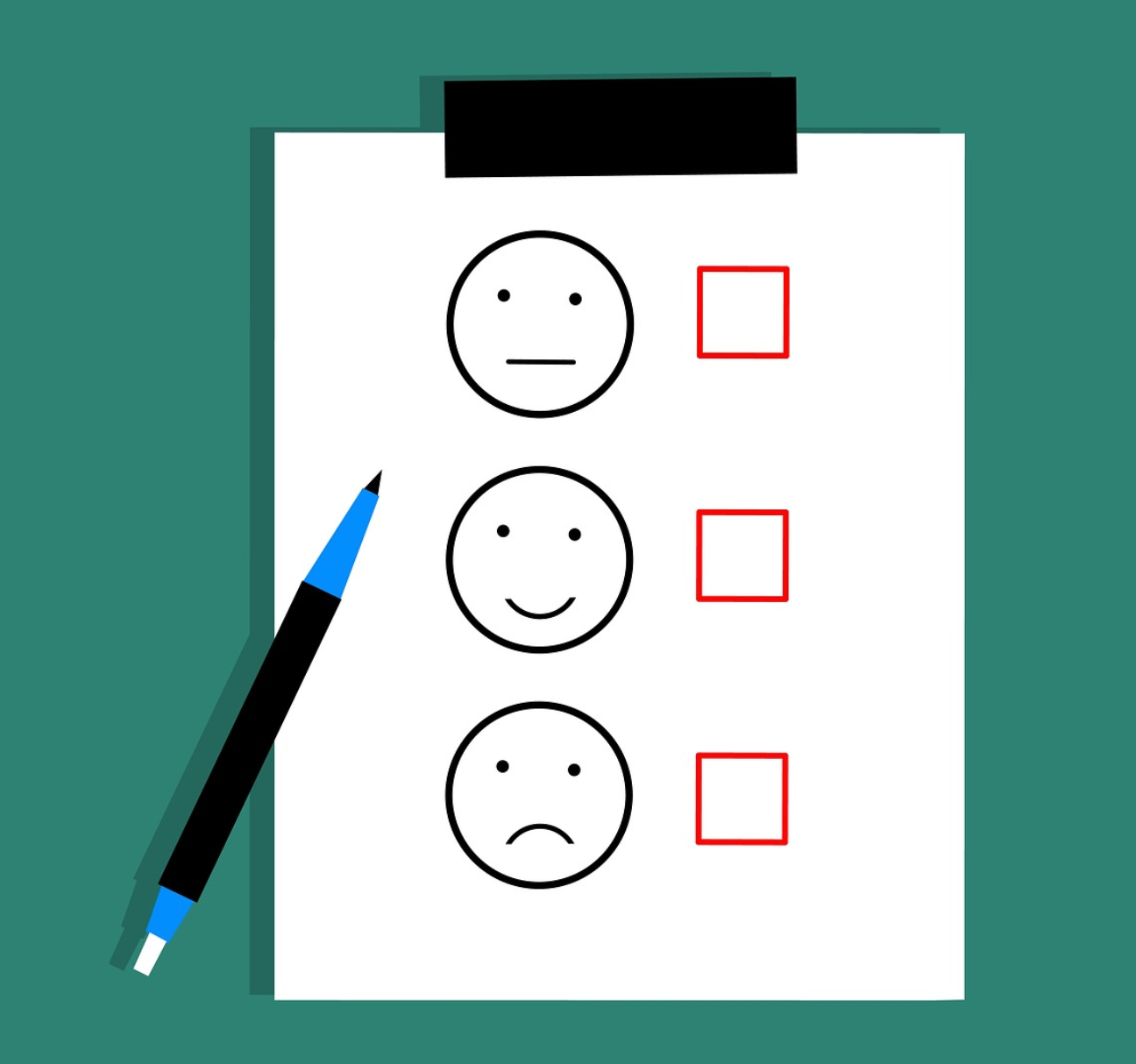
If this sounds like your customers want your company to read their minds, you'd be correct. Luckily, we're living in the digital age where every customer interaction can be recorded, analyzed, and optimized using marketing technology.
First, you can find out how your customer prefers to be contacted and create options for all communication channels, including in-app, on social, and in support channels. You can get even more explicit by using various touchpoints to get a Net Promoter Score (NPS). The NPS is an essential measure of customer experience. It utilizes a numerical scale to gauge the satisfaction, loyalty, and enthusiasm customers have for a product. Many companies trigger the NPS at each milestone of their customer's lifecycle—but not too frequently.
While NPS offers a 30,000-foot view of your customer's overall experience with your company, the Customer Effort Score (CES) allows new customers to rate how easy it was to get started with your product/service. Lisa Abbott, Head of Marketing at Wootric, explains:
When the customer completes the onboarding process, we send them a Customer Effort Score survey. The simple question, "How easy was it for you to get started with Wootric?" has given us rich feedback on what mattered to the customer—it is gratifying to celebrate where we shine and to tackle what we needed to improve. For example, our customer success team always gets big kudos but, based on CES feedback, we invested in improving all of our "getting started" documentation. What is cool is that this feedback goes into a Slack channel so customer success, support, product, sales—everyone—can immediately see how we did. If you don't use Slack, it is easy to use Zapier to send survey responses to team members in real-time via email.
You can also get feedback via chatbots. And because conversational marketing software has analytic tools to see common conversational patterns, behaviors, and questions that come up, you're learning alongside your bot—and your customers. Which means as your bot is learning how best to respond to questions, you're collecting ideas for helpful content and other onboarding aids to make the process even smoother.
Create cross-channel content that speaks volumes
Not everyone likes to interact with people when they're getting started with a new product—or they don't even know if they should be asking for help yet. Your onboarding content strategy can fill in knowledge gaps, so you're serving your customer no matter where they're getting their information.
With user experience tools like Appcues, it's easy to create informative (and delightful) in-app tutorials. In fact, Appcues itself has a content-rich onboarding flow—no surprise there. Once you launch your trial account, you'll see a welcome message.
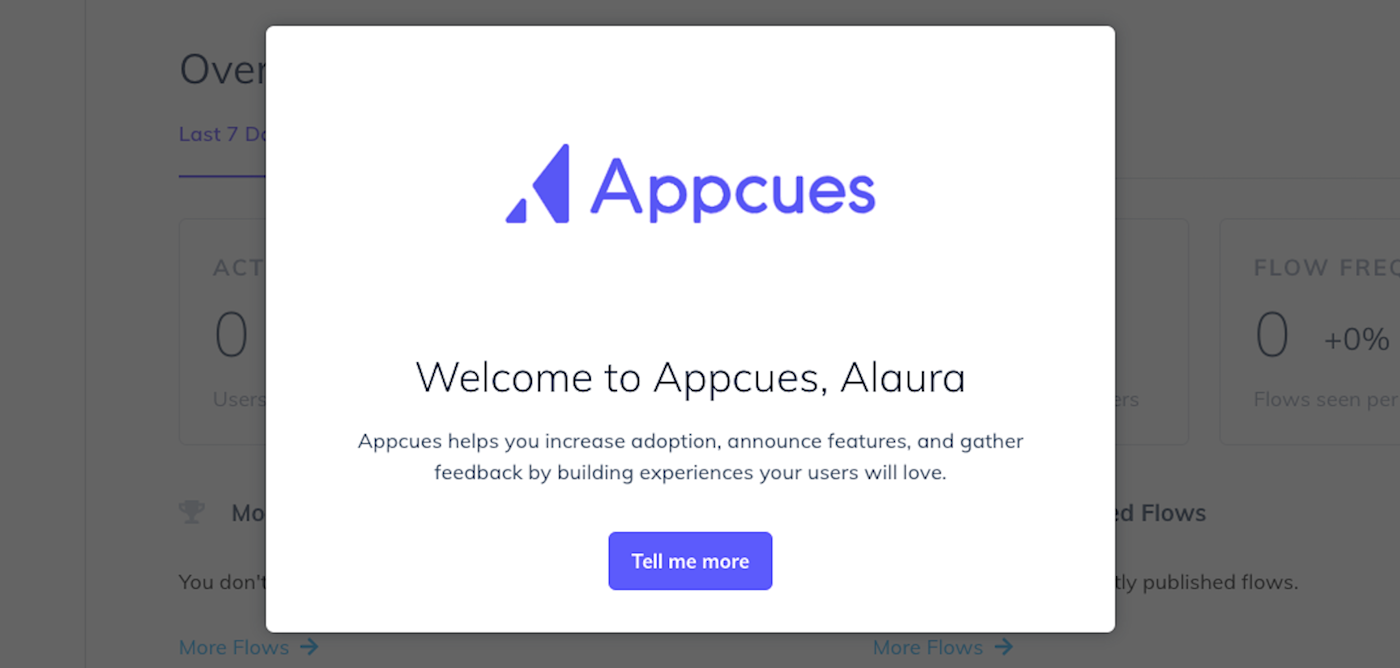
After the welcome sequence, you're asked what you want to accomplish so they can deliver a small win for you immediately. And they're transparent about why.

And after you select your goal, the app walks you through the steps you'll need to take to get there.
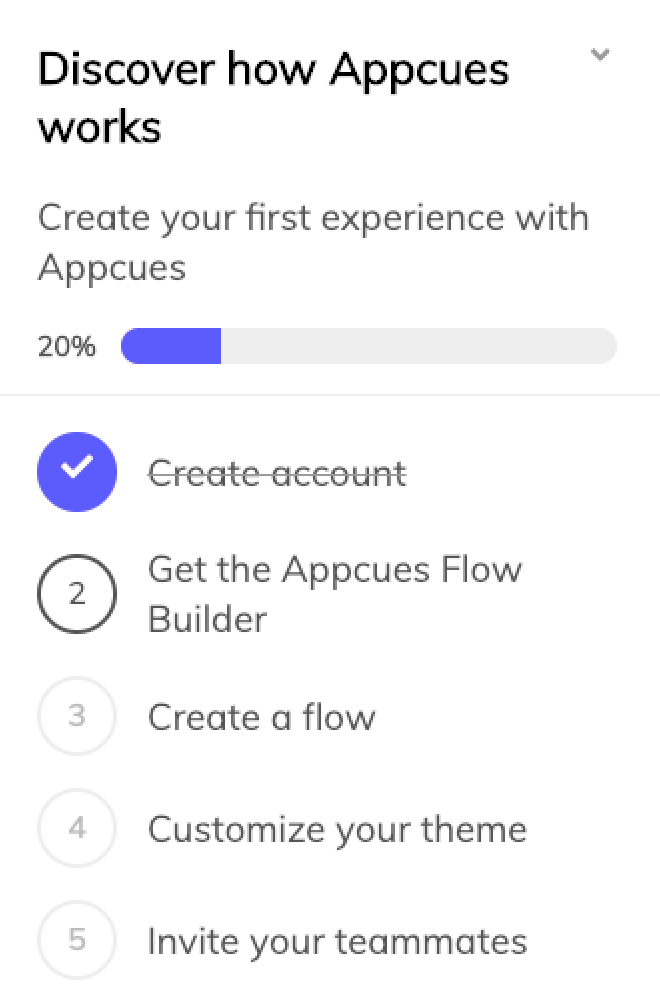
After helping you download a Chrome extension, the app launches on your website, and a 60-second instructional video helps you see all the possibilities of the tool. So within minutes of launching Appcues, customers can complete their first user experience project. The content of their onboarding flow is what drives their user success.
Of course, you don't have to limit your onboarding content to in-app tutorials. In fact, the more variety of platforms in which you offer instructive content, the more chances your customer has of finding it. Rich onboarding content creates a virtuous circle: The more customers interact with your content, the more feedback you get and the more ideas you get for more content that provides value to customers and prospects alike.
Here are just a few more ideas for content pieces you can produce to give customers a great onboarding experience:
Webinars demonstrating how to use your product/service to meet customer success milestones
A library of product-focused content (how-tos, FAQs)
Online communities where customers can go to ask questions about using the product and also discuss topics that are important to their work
eBooks/whitepapers/guides to help customers achieve goals that your product/service can help with
Podcasts to inspire customers to use your product or engage with your service in new ways
Once you implement one or more of these strategies, you need to be sure your process is repeatable and scalable. That's why it's imperative that you design a customer onboarding flow that can be supported by automated tools. Sign up for Zapier, select the apps you use most, and explore all the possible ways to connect them.
And, of course, let us know what you think of our onboarding experience.
Teamwork image from geralt via Pixabay. Customer persona image from coffeebeanworks via Pixabay. Image of survey from mohamed_hassan via Pixabay.





